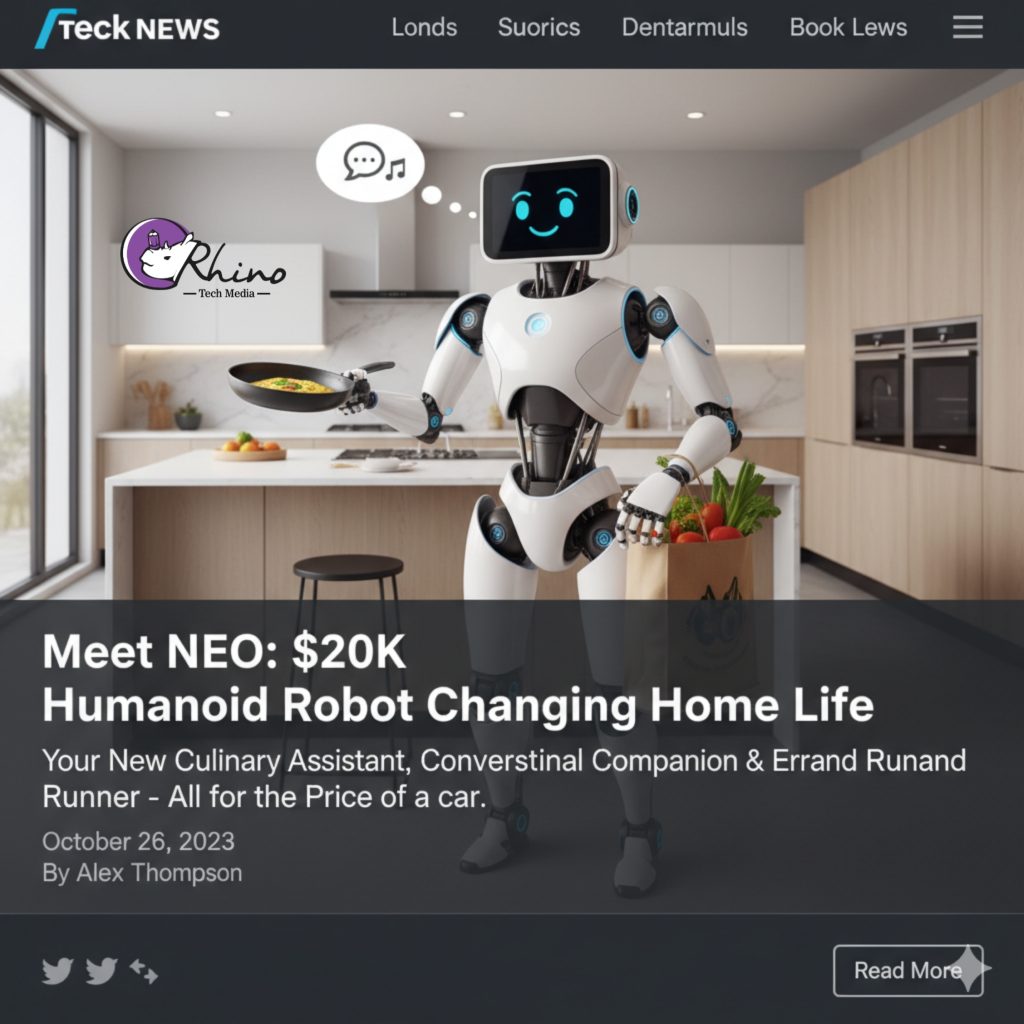In late October 2025 1X Technologies unveiled NEO, a humanoid home assistant the company is pitching as one of the first mass-market robots designed to live in ordinary homes. NEO is framed not as an industrial arm or research platform but as a general-purpose household helper built to automate repetitive chores, interact naturally with people, and learn tasks over time. The announcement generated broad press coverage and a mixture of excitement, skepticism and questions about what “home robot” really means in practice.
What NEO is and who made it
1X Technologies (formerly Halodi Robotics) — an American-Norwegian robotics company led by CEO Bernt Børnich — developed NEO as a bipedal humanoid that combines hardware for manipulation and locomotion with AI for perception, voice interaction and task scheduling. The company positions NEO as a step toward bringing humanoid robots out of labs and into everyday life. The launch materials emphasize hands-on household tasks as the primary mission: carrying groceries, tidying, folding laundry, operating simple home appliances, and providing conversational companionship.
Capabilities (what the company demonstrates and promises)
According to 1X and reporting from multiple outlets, NEO’s headline capabilities include:
- Physical assistance: carrying and stowing shopping bags, moving objects around the house, watering plants, and basic cleaning-type motions (folding, picking up items).
- Cooking and food prep demonstrations: 1X has shown NEO performing kitchen tasks in staged demos and earlier beta activities (including a publicized cook-off with chef Nick DiGiovanni), suggesting the robot can handle certain types of food prep under controlled conditions. These demonstrations indicate progress but also point to the limits of cooking in varied home environments.
- Conversation and personalization: NEO is described as able to recognize voices and faces, remember past interactions, and respond to voice commands — essentially functioning as a mobile, embodied smart assistant that can follow scheduled tasks via a companion app.
It’s important to underline that many of these abilities were shown in company materials and controlled demonstrations; real-world household variability (different kitchens, appliances, cluttered spaces) typically makes generalization harder than staged demos suggest. Independent testing and broad customer use will be the true proof.
Price, order model and availability
1X is offering Early Access units for a $20,000 one-time purchase price, and also a subscription option at $499 per month, with a refundable pre-order deposit (reported as $200). The company states U.S. deliveries for early access buyers are planned to begin in 2026, with wider international availability expected in 2027. Color choices and a six-month subscription minimum were mentioned in reporting. Buyers should also expect import taxes, shipping logistics and local support considerations if ordering from outside the U.S.
Use cases and potential social impact
If NEO delivers even a fraction of its touted capabilities reliably, the immediate beneficiaries would include households with mobility or time-constraints, busy families, and people who need assistance with routine domestic labor. NEO could reduce the burden of repetitive tasks, augment in-home care (non-medical), and change expectations around domestic labor and companionship technology. At scale, such robots could reshape service industries and home economics, raising questions about affordability and equity given the current $20K price point and subscription model.
Limitations, safety and privacy concerns
Several important caveats and concerns accompany the launch:
- Real-world robustness: The gulf between staged demos and uncontrolled homes is large. Tasks like “cook a meal from scratch” require dexterity, perception, and real-time problem solving that remain hard for robots outside lab settings. Reporters and analysts have highlighted the risk of overpromising based on limited demonstrations.
- Safety and liability: A bipedal machine operating around hot stoves, liquids, stairs and fragile objects raises safety questions. Regulatory frameworks and warranties will matter, as will clear user guidance and fail-safe behaviors.
- Privacy: NEO’s face/voice recognition, persistent learning, and cloud connectivity imply data collection. How long interactions are stored, where processing happens (locally vs cloud), and what privacy controls buyers get will be crucial for adoption. 1X’s official statements touch on personalization, but independent audits and transparent policies will be necessary.
- Cost and access model: A $20K upfront cost or a $499/month subscription puts NEO beyond the reach of most households; early adopters will likely be affluent consumers, tech enthusiasts, or institutional buyers. The subscription model also raises questions about updates, long-term maintenance and software lock-in.
Conclusion
NEO is a notable and newsworthy attempt to bring humanoid robots into everyday homes. The product announcement represents a milestone for 1X Technologies and for the broader field of consumer robotics: a company is now asking ordinary people to imagine a bipedal robot doing daily chores for a price that, while high, is within reach for some early adopters. However, enthusiasm should be tempered with caution: demos and promotional materials do not equal sustained, reliable operation in diverse households. Over the next 12–24 months, early deliveries and independent user reports will be decisive in showing whether NEO is a genuine step toward consumer humanoids or primarily a provocative, early-stage product demonstration.

